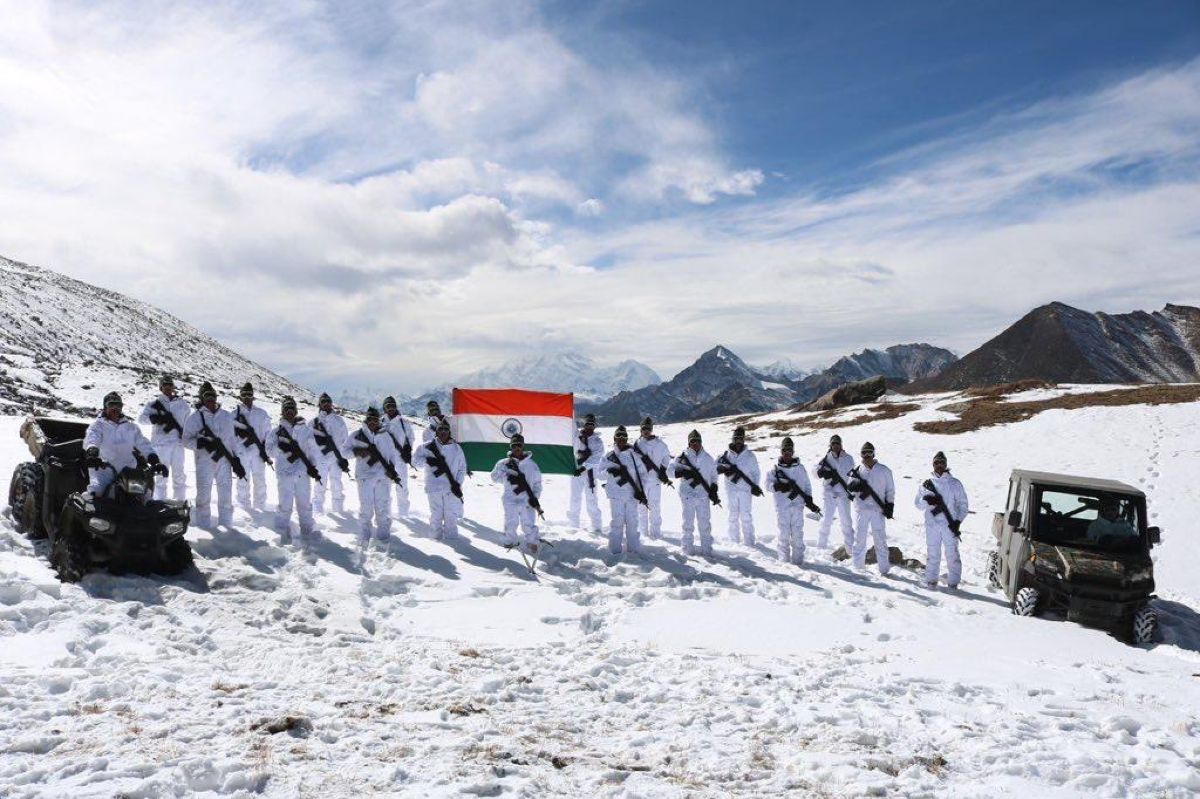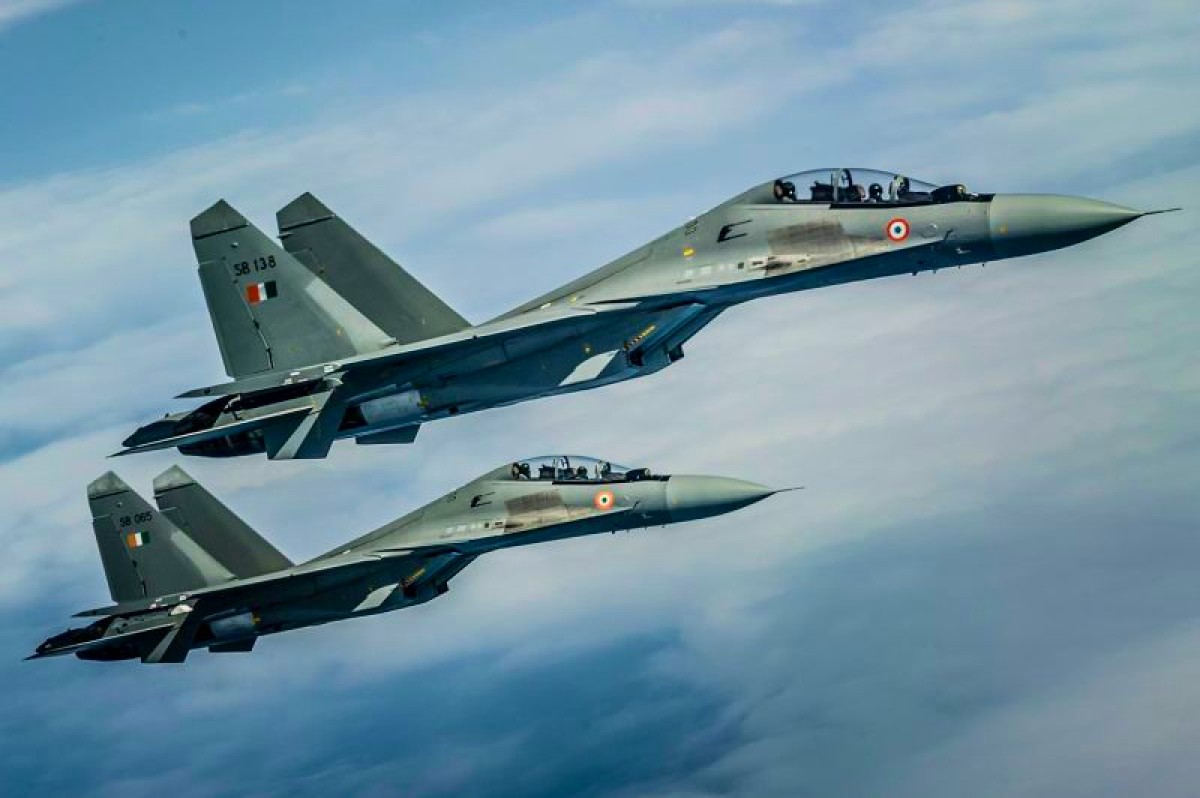As India approaches the final phases of the Lok Sabha elections, Chief of Defence Staff General Anil Chauhan has announced the imminent establishment of Integrated Theater Commands.
In India, elections for 543 seats across 37 states will be held in seven phases from April 19 to June 1, with vote counting scheduled for June 4.
The Bharatiya Janata Party (BJP), currently in power under Prime Minister Narendra Modi’s leadership, is optimistic about securing another term. BJP’s another victory could lead to significant reforms in the defense sector.
The prospect of these changes prompts preparation within the military, as evidenced by CDS Gen Chauhan’s call for a unified “joint culture” among the armed forces.
“The creation of Integrated Theater Commands will enhance military preparedness and war-fighting capabilities, laying the groundwork for extensive future reforms. An official release from the Ministry of Defence emphasized the importance of fostering joint operational structures among the Indian Army, Indian Air Force, and Indian Navy”, CDS stated.
He added, “The creation of such commands will separate the ‘operational’ functions from the Raise-Train-Sustain (RTS) and other administrative functions and will allow the operational commander to focus more on matters of security.”
Initiative To Establish Theater Command
Preparations for Theater Command commenced swiftly last year, culminating in the introduction of the Inter-services Organisations (Command, Control and Discipline) Bill, 2023, in Lok Sabha on March 15, 2023.
Promptly referred to the Standing Committee on Defence, the bill underwent scrutiny and received clearance without amendments in July 2023, followed by its passage in the Lok Sabha in August 2023.
According to the Defence Ministry, it aims to empower the Commander-in-Chief and Officer-in-Command of Inter-Services Organisations (ISOs) with all disciplinary and administrative authorities concerning the personnel serving in or attached to such organizations.
“Don’t Fix Anything That Isn’t Broken”
However, some experts caution against the immediate implementation of Integrated Theater Commands. “I’d like to echo Robert Atkins’ famous saying, “Don’t fix anything that isn’t broken.”

It’s worth noting that the Indian armed forces are already recognized as the world’s best, as highlighted in a report by Statista, a German publication, in October 2022,” said Lt Col JS Sodhi (Retd), an Indian Army Veteran.
Lt Col JS Sodhi (Retd), reflecting on CDS Anil Chauhan’s recent announcement, expressed, “Definitely the Integrated Theater Commands, once they’re implemented, will be the largest military reforms in the Indian armed forces because such a massive level of defense reforms hasn’t been carried out to date since we got independent 1947.
“However, I would like to give three reasons why I feel that this is not the opportune time for the implementation of the Integrated Theater Commands,” Sodhi stated.
Firstly, we are potentially facing a two-front war with China and Pakistan by 2035, according to the Chinese government paper ‘Wen Wei Po,’ which was titled ‘Six Wars China Is Sure to Fight In the Next 50 Years.’ Before this potential conflict, China and the US might clash over Taiwan, as suggested by the Central Intelligence Agency (CIA) Director William Burns on February 3, 2023.
The next logical point in this series is that, by 2035, Pakistan may attack India for Kashmir while China targets Arunachal Pradesh. Given that we are currently in 2024 and 2035 is still 11 years away, my first point is to wait on Integrated Theater Commands until the geopolitical situation stabilizes. This time frame allows for the streamlining and proper creation of new Theater Commands.
The second point is that the Theater Commands concept is embraced by major geopolitical powers like China, Russia, and the US due to their substantial economic and military resources.
However, India is not a global geopolitical power; rather, it is a geopolitical pivot alongside countries like Germany, France, and the United Kingdom.
For example, despite authorizing 42 squadrons of fighter aircraft for the Indian Air Force, we only currently possess 29.5 squadrons, highlighting a critical deficiency. Additionally, while 67 submarines and warships are under construction in Indian dockyards, they are not scheduled for completion until 2030, further exacerbating our equipment deficiencies.
Therefore, creating theatre commands will pose a challenge due to existing deficiencies in fighter aircraft and other equipment. It should be delayed until these deficiencies are addressed.
The third point is that the effectiveness of Theater Commands hinges on the presence of a national security strategy. This strategy delineates a nation’s combat objectives, providing clarity to all sectors, including government, corporate, and semi-governmental entities, as well as various arms of the military.
Therefore, establishing a national security strategy is crucial before implementing Integrated Theater Commands, explained Sodhi.

What Is A Theater Command?
It’s a strategic concept that aims to integrate the capabilities of the army, air force, and navy to optimize resources for wartime and operational effectiveness. This structure places all forces under the command of a senior military officer, with each command responsible for a specific geographical region.
For instance, China’s Western Theater Command oversees the entire border with India, managing the 4057-km line of actual control. According to a Pentagon report, China is rapidly modernizing its war-fighting capabilities.
In India, the Andaman and Nicobar Command (ANC) and the Strategic Force Command (which oversees nuclear weapons) are the only two Integrated Theater Commands.
Established as a tri-service command in 2001 following the Kargil war, the Andaman and Nicobar command is the only full-fledged command. However, it remains relatively small with restricted resources, prompting calls for its permanent control to revert to the Navy.
In March 2024, the decision was made to convert Mumbai into the inaugural tri-service common defense station. This station will consolidate Army, Navy, and Air Force facilities, including logistics and maintenance, under unified leadership.

Conclusion
Defense reforms are intricate and multifaceted, and this overview provides only a glimpse into the complexities involved. Given entrenched interests and bureaucratic hurdles, implementing such reforms is challenging for any nation.
India, too, faces these challenges. However, in recent years, significant strides have been made in defense reforms, resulting in enhanced strategic strength.
Initiatives such as increased private sector participation, the Agnipath recruitment scheme, the One Rank One Pension scheme, and improvements in border infrastructure underscore this progress. Additionally, the government has undertaken various measures to augment the combat capabilities of the armed forces.
Yet, the question remains: When is the most opportune time for India to establish its Integrated Theater Command?
In summary, while Integrated Theater Commands hold promise for significant military reforms, their implementation should be carefully considered in light of geopolitical challenges, equipment deficiencies, and the need for a national security strategy.
- Shubhangi Palve is a Defence and aerospace Journalist. Before joining the EurAsian Times, she worked for ET Prime. In this capacity, she focused on covering Defence strategies and the Defence Sector from a financial perspective. She offers more than 15 years of extensive experience in the media industry, spanning print, electronic, and online domains.
- Contact the author at shubhapalve (at) gmail (dot) com.




